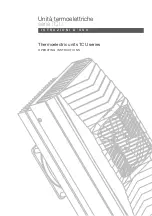
11
USER MANUAL
JEFMIG151-A
151A MIG WELDER - 230V
~
50Hz
www.jeffersontools.com
8. Preparation
b) Grasp gas cup in right hand, push onto
torch head and turn clockwise only.
WARNING!
do not turn gas cup anti-
clockwise, as this will damage internal
spring.
c) Cut wire so that it is just protruding from
the cup.
8.2.
Setting wire tension.
IMPORTANT:
You must set the correct
tension, too little or too much tension will
cause problematic wire feed and result
in a poor weld. Turn the wire lock screw
clockwise to increase the tension and
anticlockwise to decrease the tension as
shown in fig.6.
8.2.1
Correct tension between the rollers
is checked by slowing down the wire
between gloved fingers. If the pressure
roller skids the tension is correct. Try to
use the lowest tension possible as too
high a tension will deform the wire. When
you have completed welding allow the
welder to cool before storing in a safe, dry
place. Note: Damaged torches and cables
are not covered under warranty.
9.1
Thermal overload light. (see fig.9) If the duty cycle is exceeded as a result of
welding too long with a high current the yellow overload light will illuminate
and the welder will turn off. When the welder has cooled down (approx. 5 to 10
minutes) the power will be restored and welding can recommence.
9.2
Power ON/OFF switch. (see fig.9) When the power is ON the green switch will be
illuminated. When the welder is no longer required it should be switched to the
OFF position and the power plug should be disconnected from the mains supply.
9.3
Current switches MIN, MAX & 1, 2. (see fig.9) Used together these two switches
provide 4 increasing power levels as follows: MIN/1, MIN/2, MAX/1, MAX/2.
9.4
Wire speed control knob. (see fig.9) As a general rule, a higher current requires a
higher wire speed.
FIG. 7
FIG. 8
9. Control Panel
FIG. 9










































